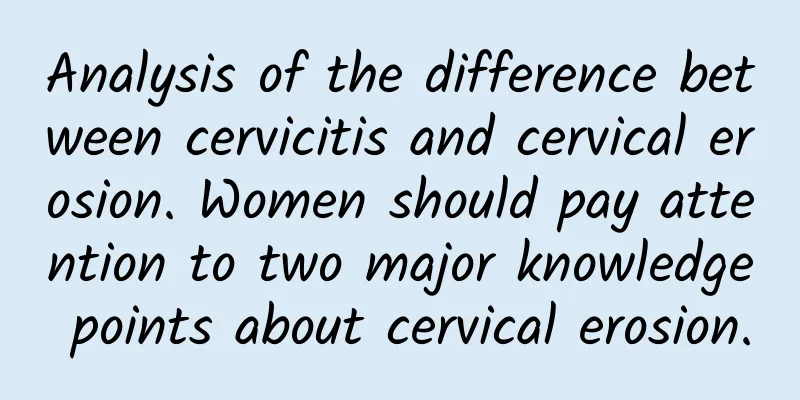Tips for preventing and treating cervical precancerous lesions

|
There are no obvious symptoms of cervical precancerous lesions in the early stage, and women will not discover it until the disease develops to a certain stage. When it is discovered, it is often in the middle and late stages of cervical precancerous lesions, which has a great impact on women's health. In fact, women should do a good job in preventing cervical precancerous lesions. So what are the three ways to prevent cervical precancerous lesions? 1. HPV testing Human papillomavirus (HPV) is the main cause of cervical precancerous lesions, which are usually transmitted through sexual intercourse. Persistent infection may cause genital cancers, mainly cervical precancerous lesions. Therefore, women should pay attention to menstrual and sexual hygiene. We can use HPV tests to determine whether the cervix is infected with the virus and monitor it at any time. 2. Cervical precancerous lesion vaccine Currently, there are two vaccines for preventing cervical precancer in the world, which have been successfully registered and used in clinical practice in many countries around the world. Experts believe that in terms of the effectiveness of the vaccine, the most suitable population for vaccination is young women who have not yet had sexual intercourse; in addition, it is even more necessary for women with a history of miscarriage, early sexual intercourse and other high-risk women for cervical precancer to be vaccinated. 3. Regular cervical smear examination Cervical smear, also known as cytology test, is the earliest traditional weapon used to prevent cervical precancerous lesions. It refers to taking a small amount of cell samples from the cervix, placing them on a glass slide, and then the doctor studies whether there are cervical cells with lesions under a microscope. If HPV and cytology tests are performed at the same time, the chances of detecting early cervical lesions can be increased. If both HPV and cytology results are normal, it indicates that the risk of cervical lesions occurring in the near future is very low, and the next check can be postponed for at least 3-5 years. In short, in order to prevent cervical precancerous lesions, women must do a good job of disease detection, that is, women should develop the good habit of regular physical examinations. It is recommended that women have a cervical smear test once a year, especially those at high risk of cervical precancerous lesions. In addition, the diet should be light. |
<<: Prevention of cervical precancerous lesions in daily life
>>: Effective prevention of cervical precancerous lesions
Recommend
Get rid of the belly fat! Scissor kick exercise is a must after giving birth
On the road to losing weight, everyone has experi...
What is the cause of mild cervical erosion?
What is the cause of mild cervical erosion? Mild ...
Today's fat, eliminate it today! 3 exercises before going to bed, losing weight is so easy!
There are many year-end parties and dinner partie...
How to quickly relieve dysmenorrhea
In daily life, many female friends are troubled b...
Vaginitis caused by adnexitis
Vaginitis caused by adnexitis is usually caused b...
How can endometriosis be detected by B-ultrasound?
B-ultrasound is a commonly used technology for ex...
Poria cocos and lean meat porridge can assist in the treatment of chronic pelvic inflammatory disease
Chronic pelvic inflammatory disease is often caus...
Which department should I go to for the second review of uterine fibroids? What examinations are needed for the second review of uterine fibroids?
Which department should I go to for a second chec...
Do I need to stay in bed for a month after having an abortion? What are the dangers of having an abortion?
Abortion is extremely harmful to women's heal...
How to avoid infection after abortion
The female reproductive system is very sensitive ...
Fallopian tube obstruction and menstrual irregularities
Fallopian tube obstruction and menstrual irregula...
Have you weighed yourself? Be careful, obesity will increase the risk of 11 types of cancer!
On February 28, 2017, the British Medical Journal...
Wuji Baifeng Pills are not a good gynecological medicine. People with abnormal leucorrhea should use them with caution.
Wuji Baifeng Pills are not a good gynecological m...
Introduction to the three main points of preventing cervical erosion
Among common gynecological diseases, cervical ero...
Experts explain how to effectively prevent dysmenorrhea
Dysmenorrhea is a very common phenomenon for fema...









